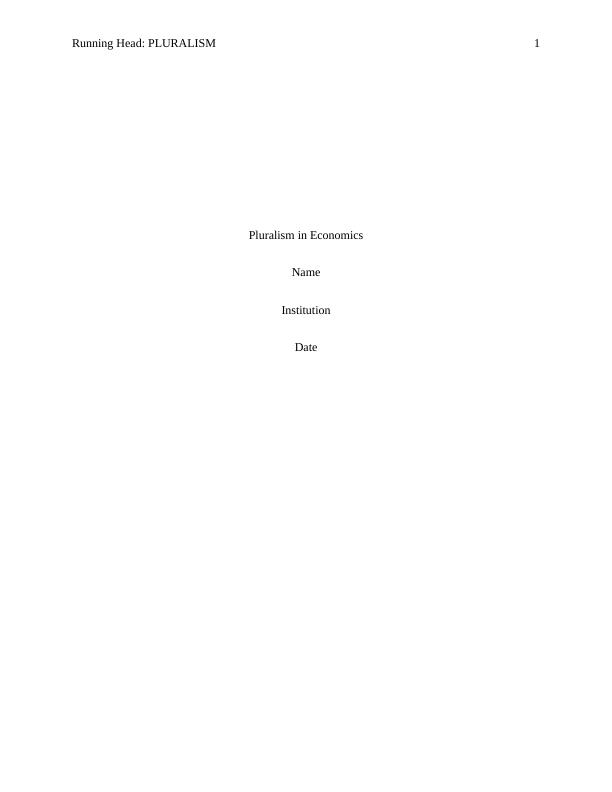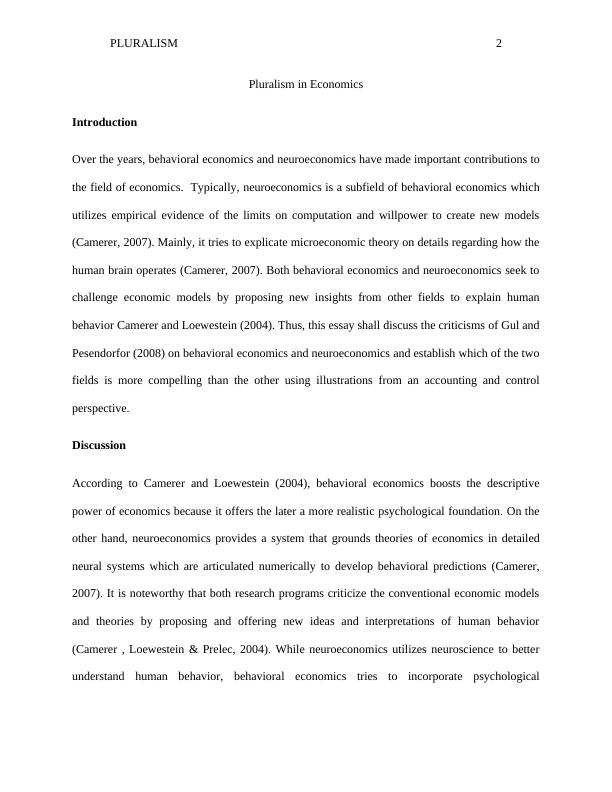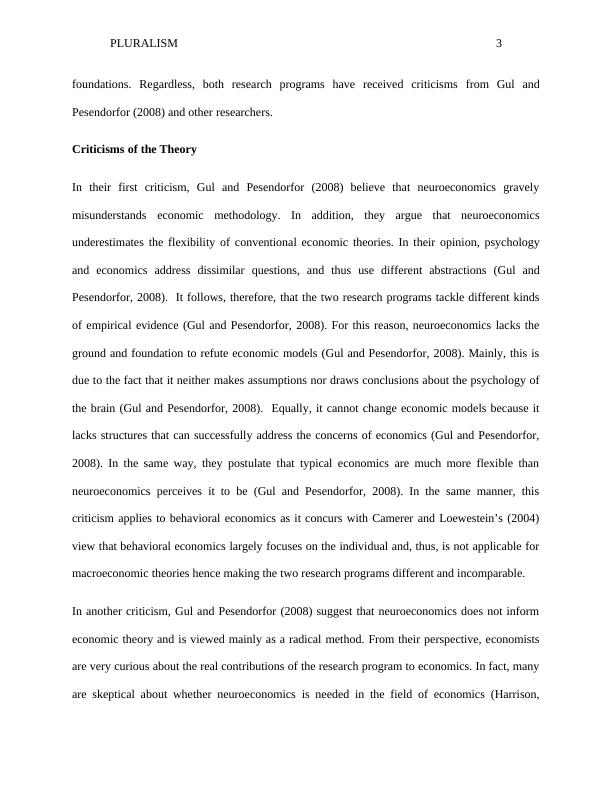Essay on Behavioral Economics and Neuroeconomics
Added on 2020-05-08
7 Pages1439 Words48 Views
Running Head: PLURALISM 1Pluralism in EconomicsNameInstitutionDate

PLURALISM 2Pluralism in EconomicsIntroduction Over the years, behavioral economics and neuroeconomics have made important contributions tothe field of economics. Typically, neuroeconomics is a subfield of behavioral economics whichutilizes empirical evidence of the limits on computation and willpower to create new models(Camerer, 2007). Mainly, it tries to explicate microeconomic theory on details regarding how thehuman brain operates (Camerer, 2007). Both behavioral economics and neuroeconomics seek tochallenge economic models by proposing new insights from other fields to explain humanbehavior Camerer and Loewestein (2004). Thus, this essay shall discuss the criticisms of Gul andPesendorfor (2008) on behavioral economics and neuroeconomics and establish which of the twofields is more compelling than the other using illustrations from an accounting and controlperspective.Discussion According to Camerer and Loewestein (2004), behavioral economics boosts the descriptivepower of economics because it offers the later a more realistic psychological foundation. On theother hand, neuroeconomics provides a system that grounds theories of economics in detailedneural systems which are articulated numerically to develop behavioral predictions (Camerer,2007). It is noteworthy that both research programs criticize the conventional economic modelsand theories by proposing and offering new ideas and interpretations of human behavior(Camerer , Loewestein & Prelec, 2004). While neuroeconomics utilizes neuroscience to betterunderstand human behavior, behavioral economics tries to incorporate psychological

PLURALISM 3foundations. Regardless, both research programs have received criticisms from Gul andPesendorfor (2008) and other researchers.Criticisms of the Theory In their first criticism, Gul and Pesendorfor (2008) believe that neuroeconomics gravelymisunderstands economic methodology. In addition, they argue that neuroeconomicsunderestimates the flexibility of conventional economic theories. In their opinion, psychologyand economics address dissimilar questions, and thus use different abstractions (Gul andPesendorfor, 2008). It follows, therefore, that the two research programs tackle different kindsof empirical evidence (Gul and Pesendorfor, 2008). For this reason, neuroeconomics lacks theground and foundation to refute economic models (Gul and Pesendorfor, 2008). Mainly, this isdue to the fact that it neither makes assumptions nor draws conclusions about the psychology ofthe brain (Gul and Pesendorfor, 2008). Equally, it cannot change economic models because itlacks structures that can successfully address the concerns of economics (Gul and Pesendorfor,2008). In the same way, they postulate that typical economics are much more flexible thanneuroeconomics perceives it to be (Gul and Pesendorfor, 2008). In the same manner, thiscriticism applies to behavioral economics as it concurs with Camerer and Loewestein’s (2004)view that behavioral economics largely focuses on the individual and, thus, is not applicable formacroeconomic theories hence making the two research programs different and incomparable. In another criticism, Gul and Pesendorfor (2008) suggest that neuroeconomics does not informeconomic theory and is viewed mainly as a radical method. From their perspective, economistsare very curious about the real contributions of the research program to economics. In fact, manyare skeptical about whether neuroeconomics is needed in the field of economics (Harrison,

End of preview
Want to access all the pages? Upload your documents or become a member.
